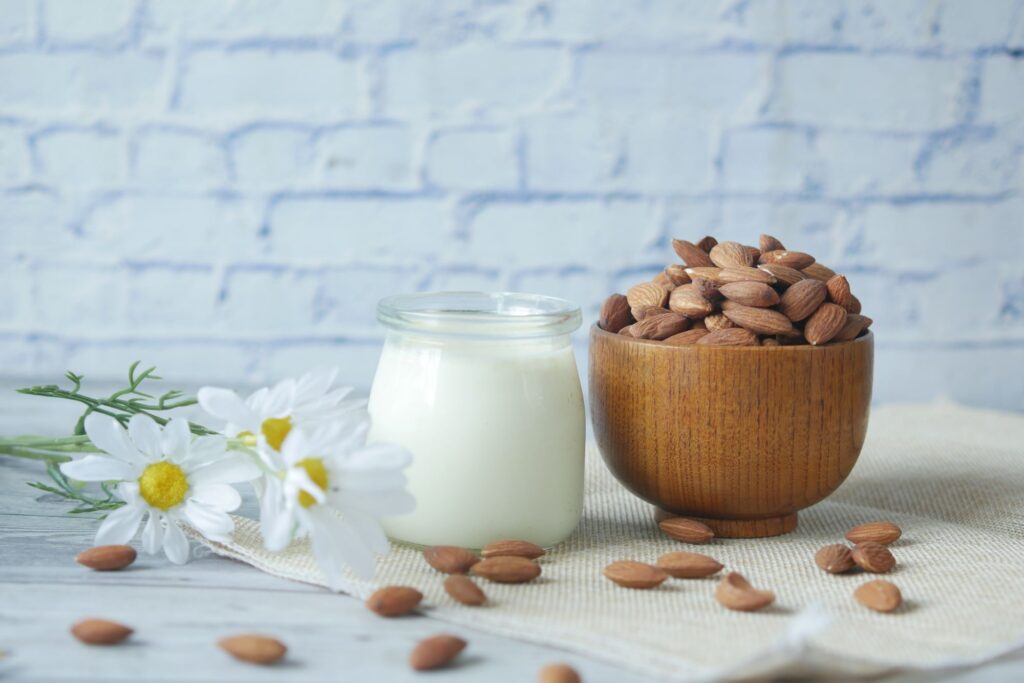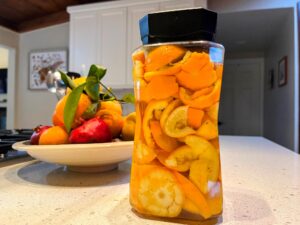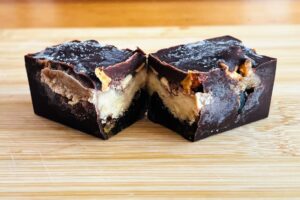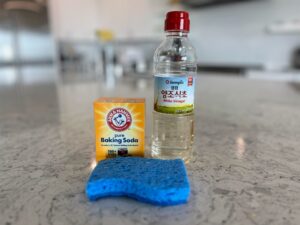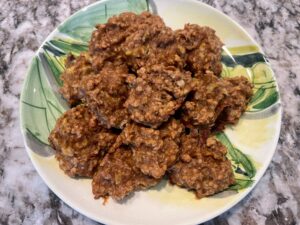If you’re looking for a creamy, fresh alternative to store-bought almond milk, making your own at home is a game-changer. Not only is it surprisingly easy, but homemade almond milk is also free of additives and preservatives, allowing you to control the flavor, sweetness, and texture. Plus, the taste is unbeatable!
In this post, I’ll walk you through a simple recipe for making homemade almond milk that’s smooth, nutritious, and perfect for everything from banana smoothies to morning coffee. Once you try it, you might never go back to store-bought again!
My Favorite Plant Milk
I’m a huge fan of almond milk. Over the years, I’ve tried all sorts of plant-based milks, both store-bought and homemade, from oat milk to cashew milk. But nothing quite compares to almond milk.
It has a creamy yet refreshing texture, which makes it work beautifully in everything from smoothies to pancakes. Most importantly, what I love is how versatile and light it is—making it the perfect addition to almost any dish.
This recipe, which I’ve slightly adapted, was originally inspired by one I found on “Ohsheglows.com.” Since discovering it, I’ve been making this almond milk religiously for the past seven years, and it’s become a staple in my kitchen. Once you try it, you’ll see why I’ve stuck with it for so long!
Benefits of Homemade Almond Milk
Homemade almond milk has plenty of benefits that make it worth the extra effort. One of the biggest advantages is that you control exactly what goes into it. You can skip the preservatives, additives, and extra sugars that are often found in store-bought options. This makes homemade almond milk a much healthier choice.
Another great benefit is that you can adjust the flavor and sweetness to your liking. Want it creamier or less sweet? You’re in charge! Plus, making your own almond milk is more affordable in the long run, especially since store-bought versions can be pricey.
Homemade almond milk is also fresh and tastes much better than most brands you’ll find in stores. The process is simple, and once you get the hang of it, you’ll find it becomes a regular part of your routine.
Using Leftover Almond Pulp
In the world of almond milk, there’s a great way to make the most of your ingredients by using the leftover almond pulp. After making almond milk, don’t just throw the pulp away—dry it out and turn it into something useful!
One of the fun things about almond pulp is that you can get creative with how you use it. I like to dehydrate it and use it in different ways, like making homemade granola or turning it into almond flour for baking. You can add it to recipes for an extra boost of nutrition.
For example, my friend found a delicious vegan chocolate chip cookie recipe that uses almond pulp, and now it’s one of our favorites! It’s a simple way to reduce waste while creating something tasty.
Homemade Almond Milk Recipe
Ingredients:
- 1 Cup of Raw Almonds
- 5 – 6 Cups of Filtered Water
- 1/2 tsp of Vanilla extract
- 1/4 tsp of Cinnamon
- 2 – 3 Medjool Pitted Dates
Instructions:

Soak the Almonds:
To begin, place the almonds in a bowl and cover them with filtered water. Let them soak overnight or for at least 8 hours. This step is essential—it softens the almonds, making them easier to blend and giving the almond milk a smoother texture.Drain and Rinse:
Then, after soaking, drain the water and rinse the almonds under cool running water. This helps remove leftover enzyme blockers and impurities, giving your almond milk a cleaner, fresher taste.Blend:
Transfer the soaked almonds to a high-speed blender along with water, vanilla extract, cinnamon, and dates. Then, blend on high for 1–2 minutes, until the almonds are finely ground and the mixture is smooth and creamy.Strain:
For straining, first place a nut milk bag, cheesecloth, or fine mesh strainer over a large bowl or pitcher. Next, pour the almond mixture through the strainer to separate the pulp from the liquid. Then, gently squeeze or press to extract as much milk as possible. This final step ensures your almond milk is silky and smooth.Store:
Pour the finished almond milk into a clean bottle or jar. Then, store it in the refrigerator for up to 3–4 days. Shake well before each use, as natural separation may occur. Enjoy fresh, homemade almond milk all week long!
Tips for Smoother Almond Milk
For a smoother almond milk, try using more water than almonds. I usually add 5 to 6 cups of water, which makes the milk more fluid and less thick. This gives it a better texture and makes it more versatile for different recipes and daily use. Feel free to experiment with the water-to-almond ratio to find what works best for you!
When it comes to storing, keep the milk in the coldest part of your refrigerator to make it last longer. If you have a fridge like my parents’ that keeps the temperature just above freezing, the milk can last twice as long.
Best Almond Milk
This homemade almond milk recipe is not only simple but also rewarding. You get to control the flavor, texture, and ingredients, ensuring a healthier and fresher option than store-bought varieties. Plus, it’s cost-effective and allows you to use every part of the almonds, including the leftover pulp.
Once you start making it yourself, you’ll appreciate the difference in taste and quality, and it may even become a staple in your weekly routine!

